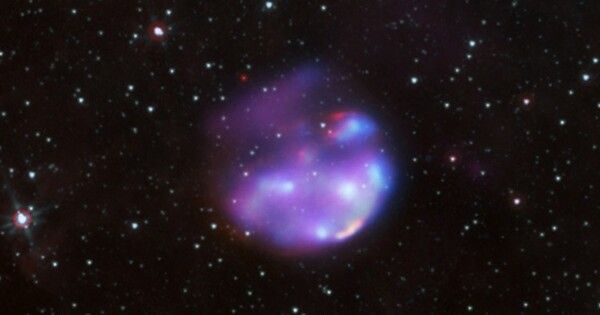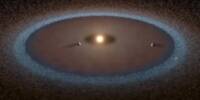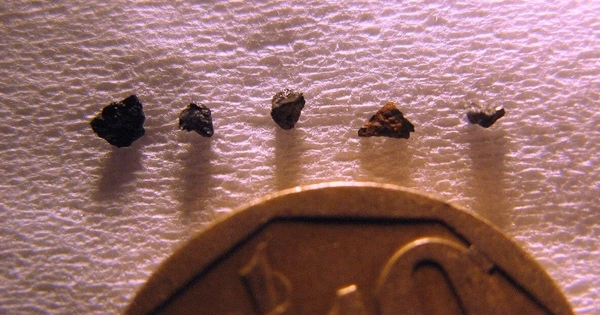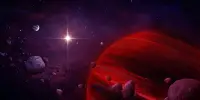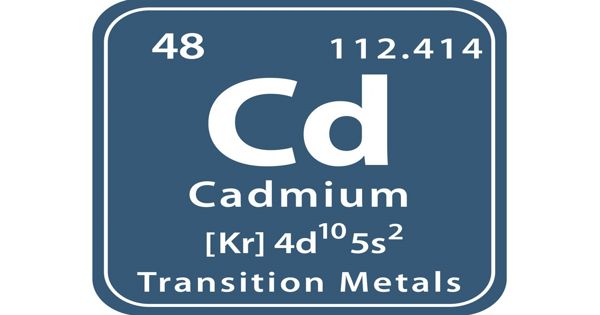NASA’s James Webb Space Telescope has discovered the most compelling evidence yet for neutron star emission at the site of a recently witnessed supernova. The supernova, SN 1987A, was a core-collapse supernova, which means that the compacted remains in its core became either a neutron star or a black hole. Evidence for such a compact object has long been sought, and while indirect evidence for the presence of a neutron star has previously been discovered, this is the first time the impacts of high-energy emission from the likely young neutron star have been recorded.
Supernovae, which are the intense final dying throes of some huge stars, erupt within hours and reach their peak brightness within months. The exploding star’s remains will continue to change at a high rate in the next decades, providing scientists with a rare opportunity to examine a key astronomical process in real time.
To create these ions that we observed in the ejecta, it was clear that there had to be a source of high-energy radiation in the center of the SN 1987A remnant. In the paper we discuss different possibilities, finding that only a few scenarios are likely, and all of these involve a newly born neutron star.
Claes Fransson
Supernova 1987A
The supernova SN 1987A exploded in the Large Magellanic Cloud, 160,000 light-years away from Earth. It was first seen on Earth in February 1987, with its brightness peaking in May of that year. It was the first supernova visible to the naked eye since Kepler’s in 1604.
About two hours before the initial visible-light observation of SN 1987A, three observatories around the world observed a burst of neutrinos lasting barely a few seconds. The two types of data were related to the same supernova event and gave vital evidence to help shape the hypothesis of core-collapse supernovae. This idea assumed that this type of explosion would produce a neutron star or a black hole. Astronomers have searched for evidence for one or the other of these compact objects at the center of the expanding remnant material ever since.
Indirect evidence for the presence of a neutron star at the center of the remnant has been found in the past few years, and observations of much older supernova remnants -such as the Crab Nebula — confirm that neutron stars are found in many supernova remnants. However, no direct evidence of a neutron star in the aftermath of SN 1987A (or any other such recent supernova explosion) had been observed, until now.
Claes Fransson of Stockholm University, and the lead author on this study, explained: “From theoretical models of SN 1987A, the 10-second burst of neutrinos observed just before the supernova implied that a neutron star or black hole was formed in the explosion. But we have not observed any compelling signature of such a newborn object from any supernova explosion. With this observatory, we have now found direct evidence for emission triggered by the newborn compact object, most likely a neutron star.”

Webb’s Observations of SN 1987A
Webb commenced science observations in July 2022, and the data used in this article were acquired on July 16, making the SN 1987A remnant one of the first objects viewed by Webb. The team used the Medium Resolution Spectrograph (MRS) mode of Webb’s MIRI (Mid-Infrared Instrument), which was developed by members of the same team. The MRS is a type of instrument called an Integral Field Unit (IFU).
IFUs can photograph an item while also capturing its spectrum. An IFU generates a spectrum at each pixel, allowing spectators to discern spectral variances throughout the item. The analysis of each spectrum’s Doppler shift allows for the determination of velocity at each point.
Spectral analysis of the results showed a strong signal due to ionized argon from the center of the ejected material that surrounds the original site of SN 1987A. Subsequent observations using Webb’s NIRSpec (Near-Infrared Spectrograph) IFU at shorter wavelengths found even more heavily ionized chemical elements, particularly five times ionized argon (meaning argon atoms that have lost five of their 18 electrons). Such ions require highly energetic photons to form, and those photons have to come from somewhere.
“To create these ions that we observed in the ejecta, it was clear that there had to be a source of high-energy radiation in the center of the SN 1987A remnant,” Fransson said in a statement. “In the paper we discuss different possibilities, finding that only a few scenarios are likely, and all of these involve a newly born neutron star.”
More observations are planned for this year, using Webb and ground-based telescopes. The research team expects that ongoing studies will shed more light on what is happening at the center of the SN 1987A remnant. These data should encourage the creation of more precise models, allowing astronomers to better comprehend not only SN 1987A, but all core-collapse supernovae.
These findings were published in the journal Science.
